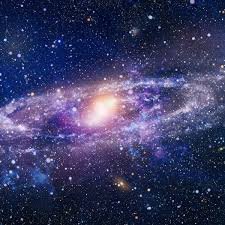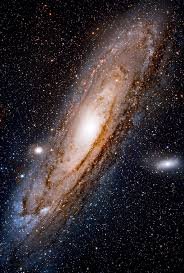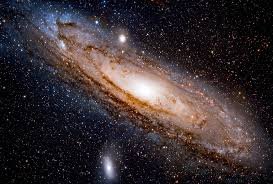Galaxy milky way in the Universe

Andromeda Galaxy
The Andromeda Galaxy, also known as Messier 31 or simply M31, is a spiral galaxy located approximately 2.5 million light-years away from the Earth in the constellation Andromeda. It is one of the closest galaxies to the Milky Way and is one of the brightest objects in the night sky, easily visible to the naked eye.
Andromeda is similar in size to the Milky Way, with a diameter of about 220,000 light-years and an estimated 1 trillion stars. It also contains a large number of globular clusters and satellite galaxies.

Studies of Andromeda have provided valuable information about the structure and evolution of galaxies. It is believed to have undergone multiple mergers with smaller galaxies in its past, which has contributed to its current structure and the formation of its central bulge.
Andromeda is also of great interest for astronomers as it is expected to collide with the Milky Way in about 4.5 billion years. The collision is expected to result in the formation of a large elliptical galaxy, although it is not yet clear how it will affect the individual stars and planets in both galaxies.
Overall, the Andromeda Galaxy is a fascinating object that provides insight into the structure and evolution of galaxies and the universe as a whole

Triangulum Galaxy
The Triangulum Galaxy, also known as Messier 33 or simply M33, is a spiral galaxy located approximately 3 million light-years away from the Earth in the constellation Triangulum. It is one of the closest and brightest galaxies in the night sky after the Andromeda Galaxy and the Milky Way.
The Triangulum Galaxy has a diameter of about 60,000 light-years, making it about one-third the size of the Milky Way. It contains an estimated 40 billion stars, along with gas and dust clouds, star-forming regions, and clusters of young and old stars.

Astronomers have studied the Triangulum Galaxy to learn about the processes of star formation and evolution. The galaxy contains many HII regions, which are clouds of gas ionized by hot, young stars, as well as older populations of stars. The study of these regions has provided valuable insights into the history of star formation in the Triangulum Galaxy.
The Triangulum Galaxy is also of interest because of its proximity to the Milky Way and Andromeda. The three galaxies are part of the Local Group of galaxies and are thought to be gravitationally interacting with each other. This interaction has important implications for the evolution of galaxies and the large-scale structure of the universe.
Overall, the Triangulum Galaxy is a fascinating object that provides important information about the processes of star formation and evolution, as well as the interactions between galaxies

Sombrero Galaxy
The Sombrero Galaxy, also known as Messier 104 or simply M104, is a spiral galaxy located approximately 28 million light-years away from the Earth in the constellation Virgo. It is one of the brightest galaxies in the night sky and is easily visible through a small telescope.
The Sombrero Galaxy is characterized by its distinctive broad, flat disk and central bulge, which give it the appearance of a wide-brimmed hat. The central bulge is thought to contain a massive black hole, which is believed to play a major role in the evolution of the galaxy.
The Sombrero Galaxy contains an estimated 800 billion stars, as well as gas and dust clouds, star-forming regions, and clusters of young and old stars. Studies of the galaxy have provided important insights into the processes of star formation and evolution, as well as the role of black holes in the evolution of galaxies.

The Sombrero Galaxy is also of interest because of its location in the Virgo Cluster of galaxies, which is one of the largest clusters of galaxies in the local universe. The study of the Sombrero Galaxy and other galaxies in the Virgo Cluster has provided valuable information about the evolution of large-scale structures in the universe.
Overall, the Sombrero Galaxy is a fascinating object that provides important insights into the processes of star formation and evolution, as well as the role of black holes in the evolution of galaxies and the large-scale structure of the universe
Congratulations @mumarismailm348! You have completed the following achievement on the Hive blockchain And have been rewarded with New badge(s)
Your next target is to reach 100 upvotes.
You can view your badges on your board and compare yourself to others in the Ranking
If you no longer want to receive notifications, reply to this comment with the word
STOPCheck out our last posts:
Support the HiveBuzz project. Vote for our proposal!
I am ready
It is great to see you are doing your first steps on Hive! Great work!
Thank you very much I will continue my work
In which community can I do my introduction?
You can choose any community you like.